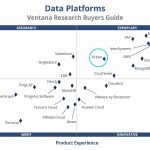Buyers Guide for Data Platforms 2024
The process of choosing the right technology for your specific business and IT needs can be complex, yet making the right decision is critical. So, how do you make an informed choice?
The product landscape changes fast, meaning the products you looked at even a few months ago may have changed significantly. And let’s face it – proof of concepts (POCs) are limited deployments with vendors showcasing their solutions for a brief period of time. You don’t want to find out later, after you’ve invested significant time and money, that a product won’t handle your specific workloads, or give you the security, scalability and price-performance you need.
You need to know upfront how it performs from both a customer and a product experience in essential categories such as performance, reliability, manageability, and validation. Likewise, you want to know that the product has a strong roadmap for your future and peer use cases are available.
The Need for Unbiased Assessments
Independent analyst reports and buying guides can help you make informed decisions. They offer unbiased, critical insights into the advantages and drawbacks of vendors’ products. The information cuts through marketing claims to help you understand how technologies, such as data platforms, truly perform to help you choose a solution with confidence.
These reports are typically based on thorough research and analysis, considering various factors such as product capabilities, customer satisfaction, and market performance. This objectivity can help you avoid the pitfalls of biased or incomplete information.
For example, the 2024 Ventana Research Buyers Guide for Data Platforms evaluated 25 data platform software providers, detailing their strengths and weaknesses. This broad perspective enables you to understand the competitive landscape and identify potential technology partners that align with your strategic goals.
The Buyers Guide is meticulously curated and structured into seven in-depth categories across Product and Customer Experience. A vendor’s overall placement is assessed through a weighted score and is only awarded to companies that meet a strict set of criteria, with the aim to streamline and aid vendor selection.
Ventana’s Market View on Data Platforms
A modern data platform allows businesses to stay competitive and innovative in a data-driven world. They manage the storage, integration, and analysis of data, ensuring a single source of truth.
Data platforms should empower all users, especially non-technical users, with actionable insights. As Ventana Research stated in its 2024 Buyers Guide for Data Platforms, “Data platforms provide an environment for organizing and managing the storage, processing, analysis, and presentation of data across an enterprise. Without data platforms, enterprises would be reliant on a combination of paper records, time-consuming manual processes, and huge libraries of physical files to record, process and store business information.”
Today’s data platforms are typically designed to be scalable and flexible, accommodating the growing and evolving data needs of your business. They support a variety of data from new and emerging sources. This versatility ensures that you can continue to leverage your data as you expand and innovate.

Ventana’s Criteria for Choosing Data Platforms
Ventana notes that buying decisions should be based on research. “We believe it is important to take a comprehensive, research-based approach, since making the wrong choice of data platforms technology can raise the total cost of ownership, lower the return on investment and hamper an enterprise’s ability to reach its full performance potential,” according to Ventana.
Three key evaluation criteria from the 2024 Ventana Buyers Guide for Data Platforms are:
- Assess Your Primary Workload Needs and Future-Proof Them for GenAI. Determine whether your primary focus is on operational or analytic workloads, or both. Operational workloads include finance, supply chain, and marketing applications, whereas analytical workloads include business intelligence (BI) and data science. Ventana predicts that by 2027, personalized experiences driven by GenAI will increase the demand for data platforms capable of supporting hybrid operational and analytical processing.
- Evaluate Your Main Data Storage and Management Criteria. Determine the capabilities you need, then evaluate data platforms that align with those requirements. Criteria often includes the core database management system, performance and query functionality, the ability to integrate data and ensure quality, whether the platform offers simple platform usability and manageability, and if it meets cost, price performance, and return on investment requirements.
- Consider Support for Data Workers in Multiple Roles. Consider the types of data you need to manage along with the key functionalities required by your users, from database administrators to data engineers to data scientists. According to Ventana, data platforms must support a range of users with different needs – across technology and business teams.
Have Confidence in Your Data Platform
In the rapidly evolving tech landscape, making informed choices is more important than ever. Analyst reports are invaluable resources that provide objective, comprehensive insights to guide those decisions.
Actian is providing complimentary access to the 2024 Ventana Research Data Platforms Buyers Guide. Read the report to learn more about what Ventana has to say about Actian and our positioning as Exemplary.
If you’re in the market for a single, unified data platform that’s recognized by an analyst firm as handling both operational and analytic workloads, let’s talk so you can have confidence in your buying decision.
The post Buyers Guide for Data Platforms 2024 appeared first on Actian.
Read More
Author: Actian Corporation
